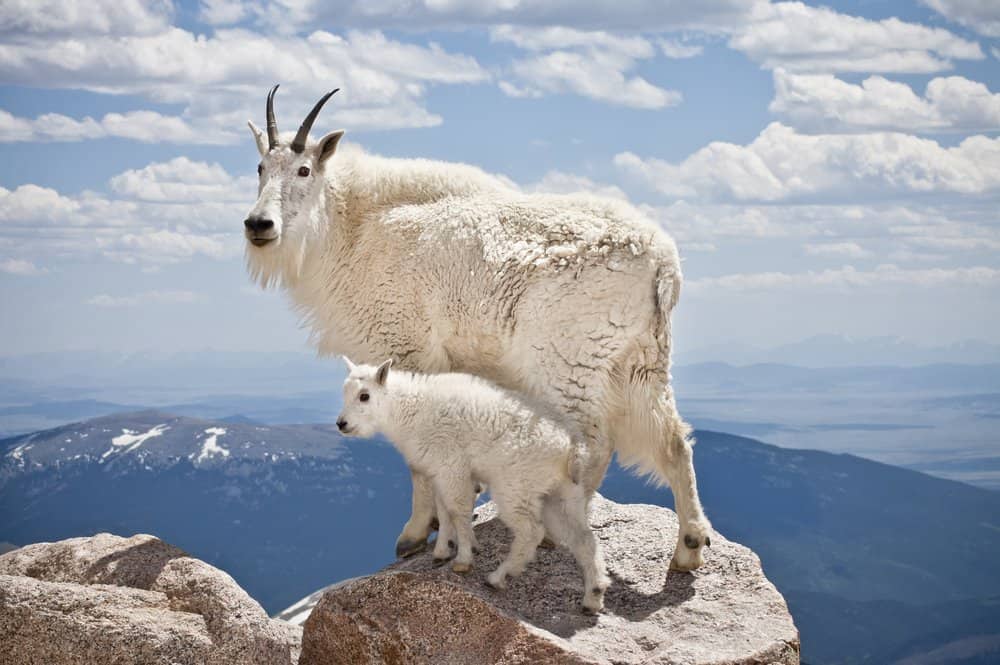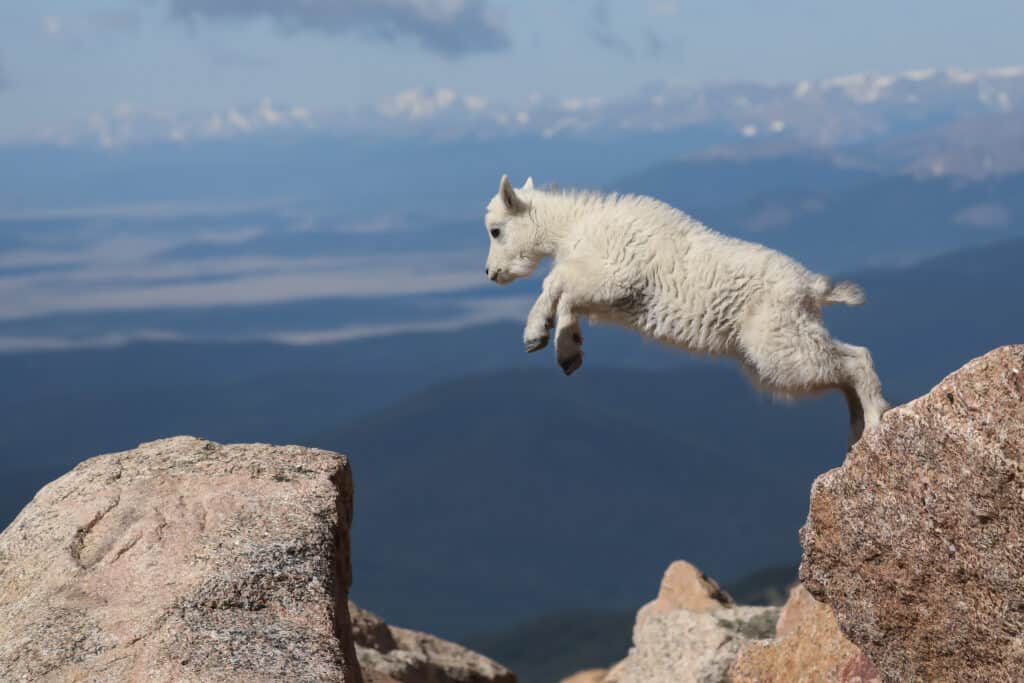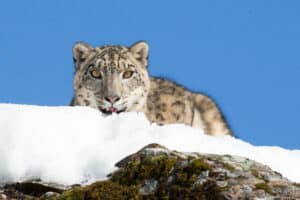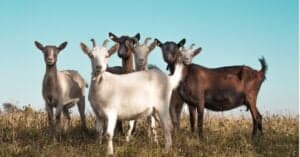Mountain 699582241 are one of the few animals that thrive in high elevations. They are often seen on mountain sides and cliffs, seemingly clinging to the rocks. They seem to defy gravity with their magical ability to climb steep, nearly vertical walls.
But how do they do it? And why don’t they fall?
What Are Mountain Goats?
Mountain goats are not actually goats. They are the only species in their family and are more closely related to antelopes and gazelles than domestic goats.
Mountain goats are well-adapted to their high-altitude homes. They have thick white fur coats that protect them from the cold and help them to blend in with their rocky and snowy surroundings.
It’s estimated that there are around 100,000 mountain goats in the world. They live in western North America, primarily in the Rocky Mountains and the Cascades of the United States and Canada.
Why Do Mountain Goats Climb Mountains?
Mountain goats climb mountains for two main reasons: to find food and to escape predators.
Mountain goats are herbivores, and their diet consists mostly of grasses, sedges, and herbs. They will also eat mosses, bark, and twigs. Since few other animals can reach the heights that mountain goats can, there is less competition for food at higher elevations.
Mountain goats are also very good at escaping predators. Their main predators are wolves, coyotes, and cougars. They are not so good at running (as other ungulates are), but by efficiently scaling the rocky landscape and traversing along treacherous ledges, mountain goats can stay out of reach of these predators.
Mountain Goats Begin Climbing When They are Just a Few Days Old

Baby mountain goats begin mastering the mountains within just a few days of being born.
©Joshua Schutz/Shutterstock.com
From the time they are born, mountain goats begin to learn the skills they need to climb mountains.
They are able to stand and walk within a few hours of being born, and they are usually climbing on rocks and ledges within a few days.
They follow their mothers up steep cliffs and craggy peaks, learning how to navigate the terrain and build their strength. And after just a few weeks after birth, they already have the skills they need to be mostly independent.
Mountain Goats Have Specialized Climbing Hooves
Mountain goats have several adaptations that help them to climb mountains. One of the most important is their hooves.
Mountain goats have cloven, or split, hooves. This means that each hoof, instead of being one solid piece, is actually two separate toes that they can wiggle and maneuver independently. With this dexterity, they can better grip onto rocks and ledges.
Their hooves are hard on the outside and soft on the inside. The hard outer layer protects their toes from being scraped on the rocks. The softer, inner, rubbery pads have a concave shape which not only allows them to grip the rocks better but can also act like a suction cup, providing additional traction.
Mountain goats also have sharp dewclaws on their inner toes. These dewclaws help them to grip the rocks even tighter and prevent them from slipping.
Mountain Goats are Great Leapers

Mountain goats can leap across big gaps to escape predators
©Kelp Grizzly Photography/Shutterstock.com
In addition to their specialized hooves, mountain goats are also great leapers. Although they typically only jump a few feet at a time, they have been seen leaping up to 12 feet in a single bound!
This ability to leap across big gaps allows them to escape predators and reach food sources that other animals can’t.
Mountain Goats Have Excellent Eyesight
Mountain goats also have very good eyesight. This is helpful for two reasons.
First, it allows them to see predators coming from a long way away and escape before the predator can get too close (their elevated perches also give them a good vantage point).
Second, it allows them to pick out the best route up the mountain. They can see ledges and footholds hiding in the landscape, and they can land those jumps with precision.
Mountain Goats Have Slim Bodies
When you first see a mountain goat, you might think that their bulky size would make them clumsy climbers. But actually, underneath all that fur, mountain goats have very slim bodies.
This slim build allows them to squeeze through tight crevices and maneuver their way across narrow ledges while maintaining good balance.
Mountain Goats Have Strong Shoulder and Neck Muscles
Mountain goats also have very strong shoulder and neck muscles. Their shoulder muscles help them to lock their front legs in place while they pull the rest of their body up to a higher ledge. And their neck muscles allow them to boost their propulsion power with careful control of their center of balance.
Mountain Goats Trek the Same Paths Repeatedly

Most mountain goats follow the same path up and down the mountain over and over again.
©MC MEDIASTUDIO/Shutterstock.com
Mountain goats tend to follow the same paths up and down the mountain, over and over again.
This allows them to become very familiar with the route. They spend their whole lives in the same general area, so they get to know every nook and cranny of the mountain as they practice each jump and maneuver repeatedly.
Mountain goats know which ledges are the best to rest on, which gaps they can easily jump, and which areas to avoid. They know where the good food and water sources are and where the predators might be hiding. And their repeated use of the same paths may also help to keep their route clear of potentially hazardous debris.
What Causes Mountain Goats to Fall?
Most mountain goat falls happen during the mating season. During this time, male mountain goats are very aggressive and will often fight one another for the chance to mate with a female.
These fights can become very intense, involving head-butting, ramming, and wrestling. And sometimes, in the heat of the moment, a mountain goat will lose its footing and tumble down the mountainside.
Although sometimes a mountain goat may slip and lose its footing, this appears to be quite rare. When this does happen, it is usually a young kid that doesn’t yet have much experience and skill in climbing.
Many of these falls are harmless or minimally injurious. But sometimes, a mountain goat can fall great distances and sustain serious injuries or even die.
Are Mountain Goats “True” Goats?

North American mountain goats are more closely related to gorals than domestic goats.
©Tanes Ngamsom/Shutterstock.com
Mountain goats are not “true” goats. True goats are members of the genus Capra, including wild and domestic goats and ibexes. Interestingly, North American mountain goats belong to their own genus–Oreamnos.
While mountain goats and true goats share certain characteristics, their skull bones differ, with the mountain goat having a lighter and thinner skull than a true goat. Its horns curve back towards its head and are shorter, pointier, and more slender than true goats’ horns.
North American mountain goats are more closely related to a group of bovine species called rupicabrids. Examples of this group are chamois, gorals, seros, and Japanese serows.
Mountain Goat Vs Grizzly Bear
In the fall of 2021, a hiker discovered evidence that a grizzly bear had been recently killed by a mountain goat in Yoho National Park, British Columbia. It’s unlikely that this is a common occurrence, as grizzlies are much larger and more powerful than mountain goats. Bears are also known to be great climbers as well, so the mountain goats would have had little advantage in that department.
But it does show that, in a fight, a mountain goat is not to be underestimated. Nanny (female) mountain goats can be especially aggressive—with each other, and with outsiders who they perceive to be a threat to their kids. Mountain goats have sharp horns up to 11 inches long, and if they can jab their opponent in just the right spot, they can cause some serious damage.
In this particular case, it’s not clear how exactly the mountain goat won the fight. Due to their tendency to live in places that are not easily accessible to humans, we don’t often get to see these interactions up close.
What Other Animals are Good Climbers?
Mountain goats are one of the few animals that are renowned for their mountain climbing abilities. While many animals can climb trees, mountains present a different challenge that requires distinct specializations.
Besides mountain goats, the other animals that are particularly good at mountain climbing are:
- Alpine ibex
- Bighorn sheep
- Dall sheep
- Bears
- Cougars (mountain lions)
Each of these animals has certain adaptations that help them to navigate the steep and often treacherous terrain. The ibex and bighorn sheep are quite similar to mountain goats, with hooves that are well-suited for gripping onto rock surfaces.
Bears are also good climbers, thanks to their sharp claws and powerful limbs. And cougars are nimble and agile, able to leap great distances and climb trees with ease.
Among these animals that can climb mountains, mountain goats are definitely one of the best.
The photo featured at the top of this post is © Eivor Kuchta/Shutterstock.com
Thank you for reading! Have some feedback for us? Contact the AZ Animals editorial team.






